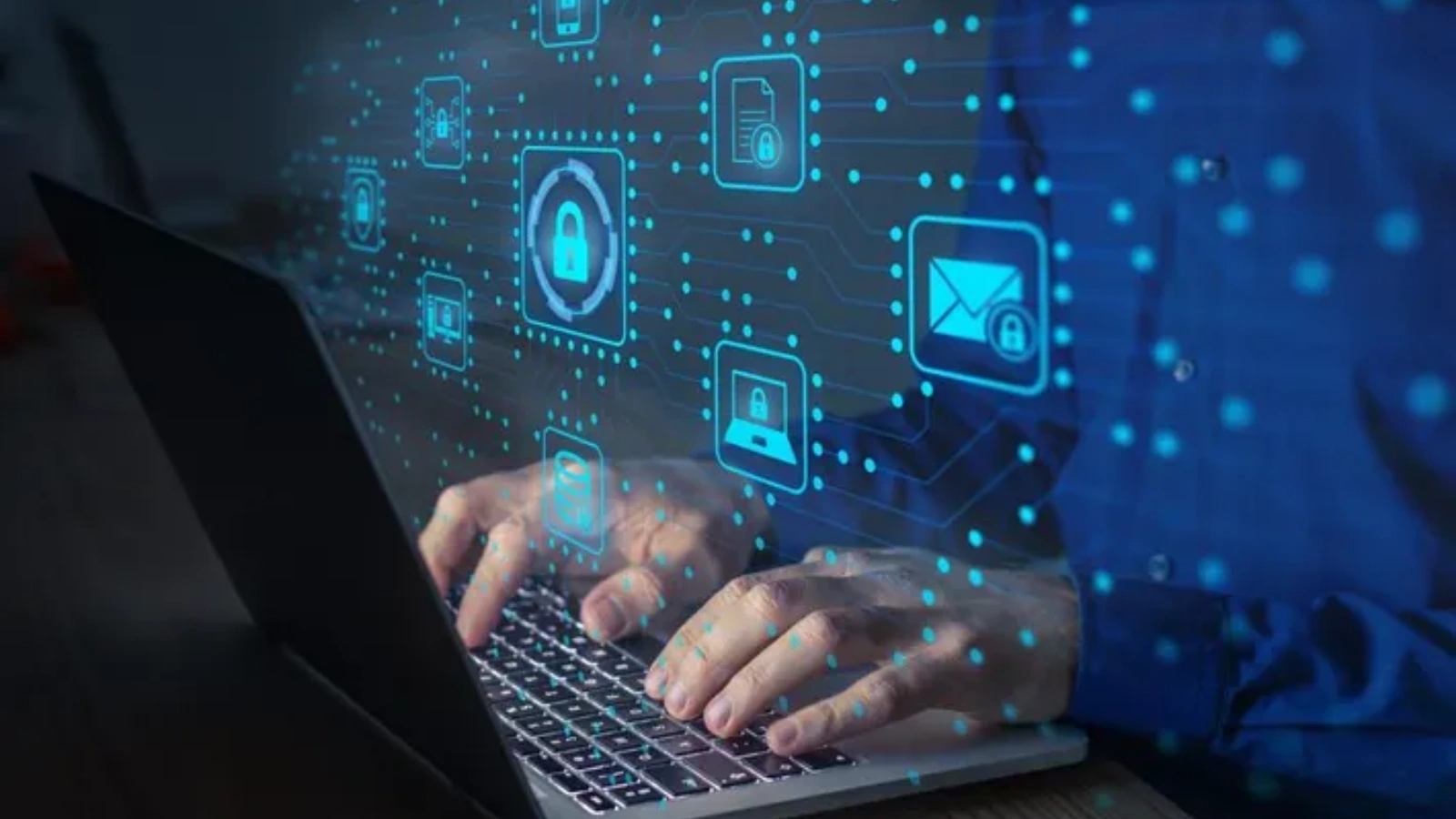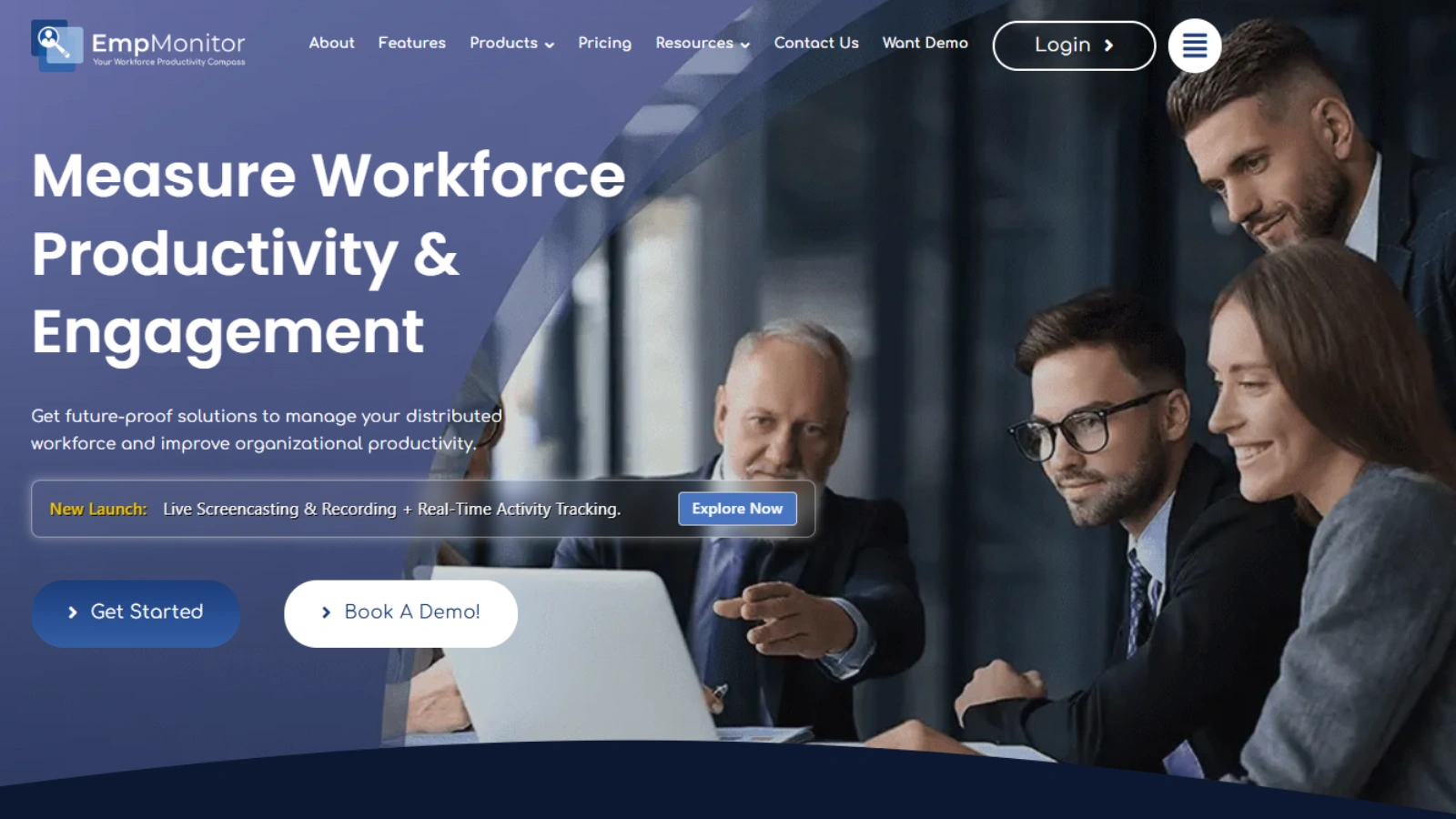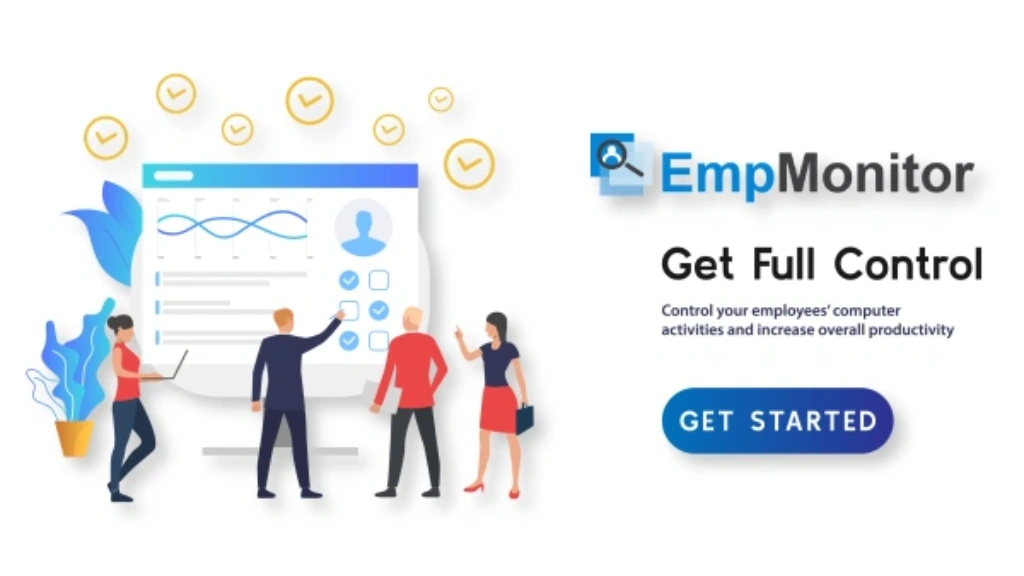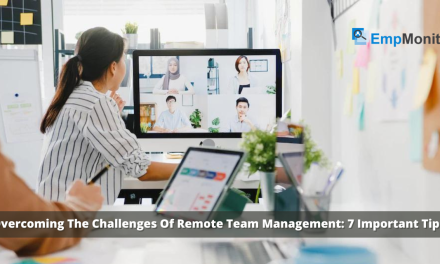Intellectual property (IP) is one of the most valuable assets a business owns, but it’s also one of the most vulnerable. From proprietary software and design blueprints to trade secrets and client data, the risk of IP theft is growing rapidly in today’s connected environment. Preventing IP theft is no longer optional; it’s a business necessity. Whether the threat comes from external hackers or insiders with access to sensitive information, companies must adopt a proactive approach to safeguard their assets. This means combining employee awareness, legal compliance, and advanced monitoring tools to build a secure and resilient IP protection strategy.
In a hurry? Listen to the blog instead!
What Is IP Theft? 
Intellectual property (IP) theft refers to the act of stealing or using someone else’s ideas, inventions, trade secrets, or creative works without permission. For businesses, IP theft can lead to financial loss, damaged reputation, and loss of competitive advantage. While physical theft is visible and traceable, IP theft often goes unnoticed until significant damage is already done.
From startups to large enterprises, every business has valuable intellectual assets, ranging from proprietary software code to customer lists and product blueprints. Without protection, these assets become prime targets for theft.
Types Of Intellectual Property Vulnerable To Theft
Every business, regardless of size or industry, holds valuable intellectual property that must be protected. Understanding the different types of intellectual property (IP) makes it easier to identify what’s at risk and implement targeted security measures.
Trademarks
Trademarks include your business name, logo, slogans, product packaging, or anything that distinguishes your brand in the market. These assets build brand recognition and customer loyalty. If stolen or imitated, trademarks can mislead customers, damage brand reputation, and lead to loss of market trust. For example, counterfeiters using a similar logo can deceive buyers and profit from your established identity.
Copyrights
Copyright protects original works such as blogs, videos, social media posts, product manuals, designs, and marketing content. Creative materials are especially vulnerable in digital formats, where copying and distribution are just a click away. If your copyrighted content is stolen, competitors can exploit your efforts without investing their own time or money, diluting your brand’s uniqueness.
Patents
Patents protect inventions, product designs, and innovative processes. These are often core to a business’s competitive edge and R&D investments. Patent theft occurs when someone replicates or uses your innovation without authorization, potentially launching competing products before you even go to market. This can cripple growth, especially for startups and tech-driven companies.
Trade Secrets
Trade secrets include confidential business information like customer lists, pricing strategies, source codes, manufacturing techniques, and formulas. Unlike patents or copyrights, trade secrets aren’t publicly registered, which means once they’re stolen, you may lose the advantage permanently. Internal leaks are the most common way trade secrets are compromised, often by trusted employees or former staff with access to sensitive systems.
It’s important to note that IP theft isn’t always carried out by external hackers. Insiders, such as employees, contractors, or business partners, can pose significant threats due to their direct access to internal systems. Disgruntled or careless employees might intentionally or unintentionally share confidential data, making insider threat prevention a critical layer of protection.
What Is IP Theft In Cybersecurity?
In cybersecurity, IP theft refers to unauthorized access, download, or transfer of proprietary information using digital means. Hackers, cybercriminals, or even employees can breach security systems to access sensitive IP.
Some common cyber methods used for IP theft include:
- Phishing emails
- Weak passwords
- Unsecured file sharing
- Malware and spyware
Cybersecurity breaches not only result in data loss but can also bring regulatory fines and lawsuits, making it essential to focus on insider threat prevention and advanced digital monitoring tools.
Read More!
What Is An Insider Threat? Definition, Types, And Preventions
Insider Threat Examples: Spot Potential Risks and Mitigate
Insider Threats: The Hidden Danger Within
Insider threats are among the most dangerous and difficult risks businesses face today. Unlike external cyberattacks, these threats originate from within the organization, often from trusted individuals like employees, contractors, or business partners who have authorized access to sensitive information and systems. Because they operate behind the firewall, insider threats can bypass many traditional security measures without immediate detection.
What makes these threats particularly concerning is their subtlety. A malicious insider might slowly siphon off data over weeks or months, while a careless employee might unintentionally expose trade secrets by using unsecured devices or sharing confidential files. Even former employees who retain access to company tools can pose serious risks if their credentials are not properly revoked.
Common red flags of insider threats include:
- Unusual login hours: Accessing systems during non-working hours or holidays may indicate suspicious activity.
- Excessive file transfers: Downloading or moving large amounts of data without a clear business reason could be a sign of data theft.
- Frequent access to sensitive documents: Employees regularly accessing information outside their job role may be overstepping their boundaries.
- Unauthorized use of USB devices: Copying files to external storage can be a tactic for stealing intellectual property.
To effectively combat this, organizations must rely on insider threat prevention software that provides real-time monitoring and behavior analysis. These tools help detect anomalies, send alerts, restrict unauthorized actions, and log evidence for investigation. By identifying risks early, businesses can prevent small breaches from turning into costly IP theft incidents.
Read More!
How Digital Forensics Can Help TO Investigate Data Theft?
How Insider Threat Prevention Software Strengthens Your Defense?
Traditional cybersecurity measures often focus on external threats firewalls, antivirus tools, and spam filters. However, they fall short when the threat comes from someone inside the organization. That’s where insider threat prevention software becomes a game-changer. This specialized software is designed to detect, prevent, and respond to suspicious activity from within the workplace, providing an essential layer of protection for your intellectual property.
By continuously monitoring user behavior, access patterns, and data movement, this software creates a baseline of normal activity. When something unusual occurs, like a sudden spike in file downloads or login attempts at odd hours, it triggers real-time alerts so you can take immediate action. This level of visibility is critical for identifying threats before they cause damage.
Key Capabilities Include:
- Real-Time Alerts on Suspicious Activity: Instantly notifies security teams about abnormal behavior such as unauthorized file access, unexpected logins, or privilege escalations.
- USB Access Restriction: Prevents data from being copied to external drives or devices, a common tactic used in IP theft.
- Secure File Sharing and Downloads: Ensures that files are transferred only through approved, encrypted channels, eliminating risky behavior.
- Session Recordings and Logs: Tracks every action taken by users, enabling a full audit trail in the event of a breach or compliance review.
Beyond security, these tools also support regulatory compliance by maintaining detailed activity logs and enforcing data access policies. Whether you’re dealing with trade secrets, customer data, or proprietary technology, insider threat prevention software helps you stay ahead of potential breaches, protect your IP, and maintain trust in your organization.
How EmpMonitor Helps In IP Theft Prevention?
EmpMonitor is a robust employee monitoring and insider threat prevention solution that safeguards businesses against IP theft. Here’s how it helps:
Employee Monitoring Software
EmpMonitor provides real-time visibility into employee activities. It offers context-rich reports that allow managers to track team activity, ensuring alignment with business goals. It enhances productivity while detecting unusual behavior that might lead to IP theft.
Time-Tracking
With its advanced time-tracking module, managers can view productive and idle work hours. This helps assess accountability and flag unproductive or suspicious behavior that may indicate internal threats.
User Activity Monitoring
EmpMonitor logs app and website usage, screen recordings, screenshots, and activity timelines. Any anomalies in behavior patterns can be quickly identified and addressed.
Insider Threat Prevention
This core feature protects sensitive data by detecting risky actions such as unauthorized access or attempts to download trade secrets. It helps prevent both intentional and accidental leaks.
Data Loss Prevention (DLP)
Along with monitoring and insider threat detection, EmpMonitor also comes with a powerful Data Loss Prevention (DLP) feature to safeguard intellectual property. It helps organizations block unauthorized websites, restrict non-compliant apps, and prevent USB or external device access to stop sensitive data from being copied or transferred. DLP policies can be customized to fit organizational needs, ensuring protection across departments like R&D, finance, and operations. Additionally, real-time alerts notify admins of any attempts to breach data security, allowing immediate action. By combining monitoring, threat prevention, and DLP, EmpMonitor ensures complete protection against both accidental leaks and malicious insider activity.
Live Screencasting and Screen Recording
Get real-time visibility or access to past activity through secure screen recording features. These tools assist in compliance, training, and internal investigations.
Real-Time Activities Tracking
EmpMonitor delivers a centralized dashboard showing all active/inactive employees, app/website usage, and more. Such live tracking empowers quick responses to any IP theft indicators.
Project Management & Engagement
Built-in project management features allow managers to assign tasks, monitor progress, and increase engagement, thereby reducing disengagement risks often linked to insider threats.
How To Prevent IP Theft: Proven Business Strategies
Protecting intellectual property is not just a legal concern; it’s a strategic imperative. Businesses need to proactively secure their digital and physical assets before any breach occurs. Here are proven strategies that help prevent IP theft and strengthen your overall security posture:
Educate Your Workforce:
Employees are often the first line of defense against IP theft. Regular training on intellectual property rights, data handling protocols, phishing threats, and security policies is essential. When employees understand what’s at stake, they’re more likely to follow best practices.
Restrict Access:
Not every employee needs access to every file. Use role-based access control to ensure that only authorized personnel can view or edit sensitive data. Limiting access reduces the risk of accidental or intentional misuse.
Use Monitoring Tools:
Implementing robust monitoring tools like EmpMonitor can give you visibility into real-time user activity. From file transfers and login patterns to screen recordings, these tools help detect anomalies and prevent internal threats before they escalate.
Secure Digital Assets:
Use encryption for all sensitive data. Ensure strong password policies are in place and require multi-factor authentication for accessing important files. VPNs can further protect data in transit, especially for remote teams.
Audit Regularly:
Schedule periodic internal audits to examine access logs, employee behavior, system vulnerabilities, and file movement. These reviews can uncover unusual patterns or potential risks before they turn into major issues.
Enforce Legal Agreements:
Protect your business legally by using non-disclosure agreements (NDAs), employment contracts with strong IP protection clauses, and confidentiality policies. These legal tools act as deterrents and provide the framework to take action if someone breaches your IP rights.
Legal Tools And Compliance For IP Protection
While technical tools and internal policies are essential, legal safeguards form a strong foundation for protecting intellectual property. Businesses should incorporate the following legal tools:
- Non-Disclosure Agreements (NDAs): Essential for both employees and external collaborators to ensure sensitive information stays protected.
- Employment Contracts with IP Clauses: Clearly define who owns what and what constitutes confidential information.
- IP Registrations: Officially register your trademarks, copyrights, and patents to establish legal ownership and make it easier to enforce your rights.
- Data Privacy Law Compliance: Ensure your IP security practices align with international standards like GDPR, HIPAA, or other regional laws. This protects you from both theft and regulatory penalties.
Having a solid legal framework makes it easier to respond quickly and effectively in the event of an IP breach.
Building An IP Theft Response Plan
Even with robust prevention strategies in place, incidents can still happen. That’s why every organization should have a clearly defined response plan to handle potential IP theft:
Step 1: Identify the Breach
Use monitoring software like EmpMonitor to detect suspicious activity, file movement, or unauthorized logins.
Step 2: Isolate the Threat
Immediately block access for compromised users or systems to prevent further data leakage.
Step 3: Investigate the Incident
Collect logs, screen recordings, and digital evidence to understand the scope of the breach.
Step 4: Notify Legal and Compliance Teams
Bring in your legal department to assess liabilities and ensure that you’re following proper legal protocols.
Step 5: Inform Stakeholders
If required by law or policy, notify clients, partners, and regulatory bodies about the breach and actions taken.
Step 6: Implement Corrective Measures
Fix vulnerabilities, update security protocols, and provide additional training if necessary to prevent future incidents.
Having a response plan in place helps minimize the impact of IP theft, speeds up recovery, and reinforces your business’s resilience.
Future-Proofing Your IP Protection Strategy
Preventing IP theft isn’t a one-time task; it’s an ongoing commitment. To build long-term security and stay ahead of evolving threats, companies should:
- Continuously Monitor Behavior: Use tools like EmpMonitor for real-time tracking of user activity, software usage, and data access patterns.
- Update Policies and Protocols: Regularly review and refine your IP protection policies to reflect new risks and regulatory changes.
- Upgrade Monitoring Software: Ensure your tools are current, scalable, and equipped with advanced features like screencasting, activity tracking, and USB blocking.
- Invest in Employee Engagement: A satisfied, well-engaged workforce is less likely to pose insider risks. Encourage transparency, provide growth opportunities, and recognize good performance.
By combining strong internal culture, legal safeguards, and intelligent software like EmpMonitor, your business can stay one step ahead of IP theft today and in the future.
Conclusion
IP theft is more than a security concern; it’s a threat to innovation, growth, and competitive advantage. Businesses must adopt multi-layered strategies that include legal safeguards, employee education, insider threat prevention, and robust monitoring tools like EmpMonitor. With a clear response plan and continuous vigilance, companies can stay step ahead of threats and protect what matters most.
FAQs
- What is IP theft?
IP theft is the unauthorized use, access, or reproduction of intellectual property, including patents, trademarks, copyrights, or trade secrets. It often involves stealing valuable business information like product designs, branding materials, or proprietary processes. Such theft can lead to major financial and reputational losses for organizations. - What are common examples of IP theft cases?
Examples of IP theft include stealing software source code, duplicating or selling patented products, and accessing confidential client lists or databases without authorization. Another growing issue is the misuse of trade secrets by former employees. These actions directly impact a company’s innovation and market advantage. - What is IP theft in cybersecurity?
In cybersecurity, IP theft involves digital tactics like hacking into servers, using phishing emails to trick employees into revealing credentials, or deploying malware to access private files. These attacks can go unnoticed for long periods, making them especially dangerous. Organizations must use encryption, network monitoring, and access controls to defend against such digital breaches. - How can insider threat prevention software help?
Insider threat prevention software monitors user behavior, flags unusual activity, and restricts unauthorized access to sensitive data. It helps detect threats from within the organization before any serious damage is done. Real-time alerts and comprehensive logs make it easier to investigate and respond promptly. - Why choose EmpMonitor for IP theft prevention?
EmpMonitor offers powerful tools like live screen monitoring, activity tracking, and insider threat detection that help protect your intellectual property from internal and external threats. Its Data Loss Prevention features, like USB blocking and secure screen recording, provide deep visibility and control. With EmpMonitor, businesses gain a proactive layer of defense and compliance-ready reporting.













